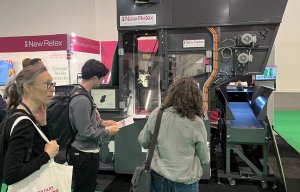
Reju partners with Circle-8
Opinion


Future Fabrics Expo, held from 26th-28th June in London, continued its overarching focus on solutions to address the fashion industry’s lack of fibre diversity.
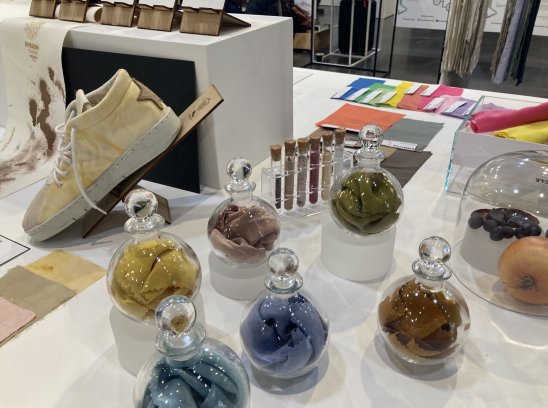
5th July 2023
Anne Prahl
|
London
Key themes included innovation around converting waste materials into next-gen fibres and feedstocks for textiles and dyes, development of new-gen biomaterials to offer alternatives to the most used fashion fabrics, and a fresh look at traditional fibres.
Transforming waste to high-value raw materials
Textile manufacturers and material innovators successfully highlighted opportunities for the research, development and commercialisation of utilising a variety of waste streams, including textile, agricultural and food waste, to create new types of feedstocks and fibres.
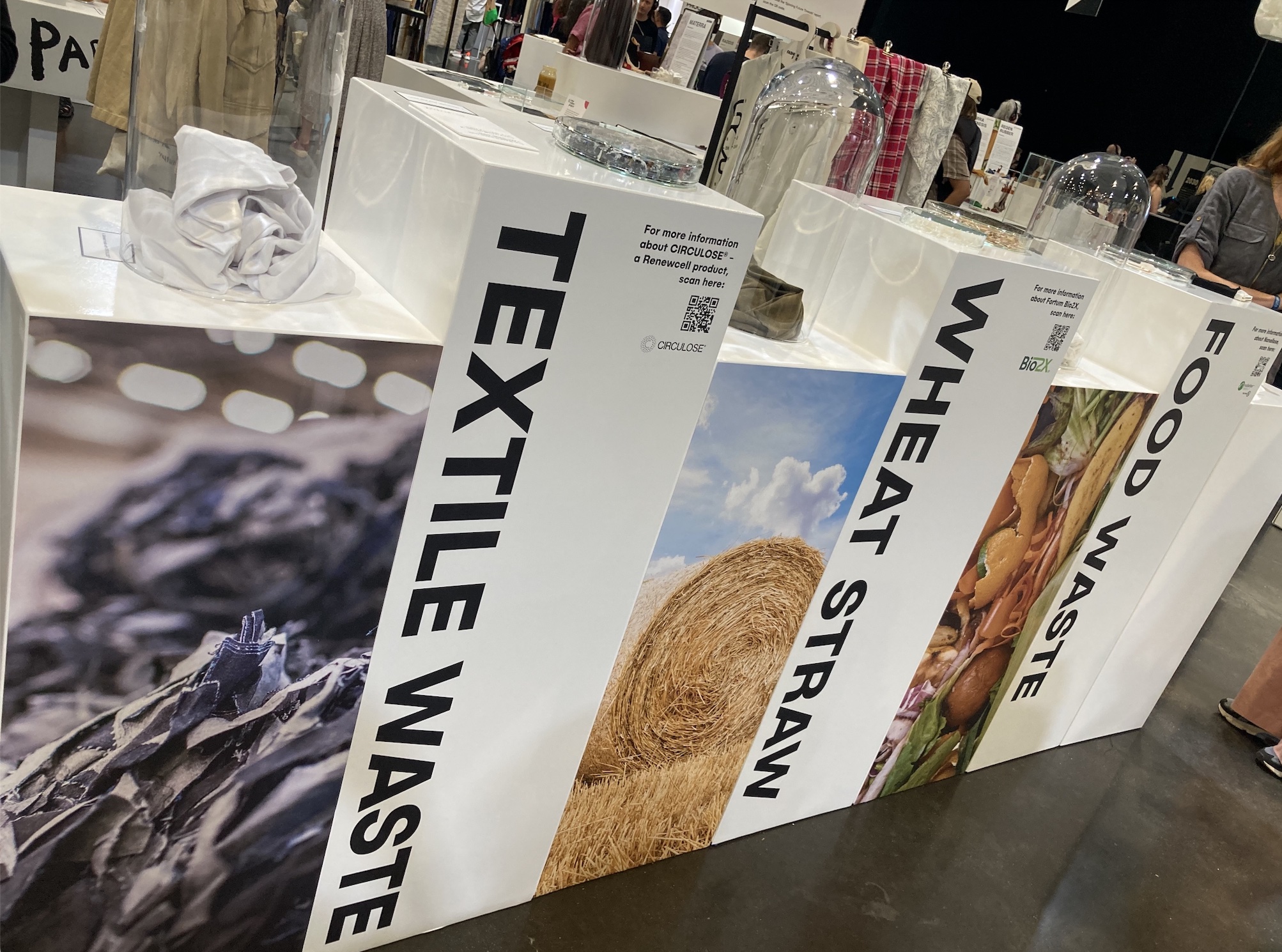
The pressing need for managing and eliminating textile waste has been much discussed and likely accelerated by the incoming EU Sustainable and Circular Textile regulations, there are positive signs that the industry is at a turning point, as piloting and deployment of fibre-to-fibre recycling technologies is gathering pace.
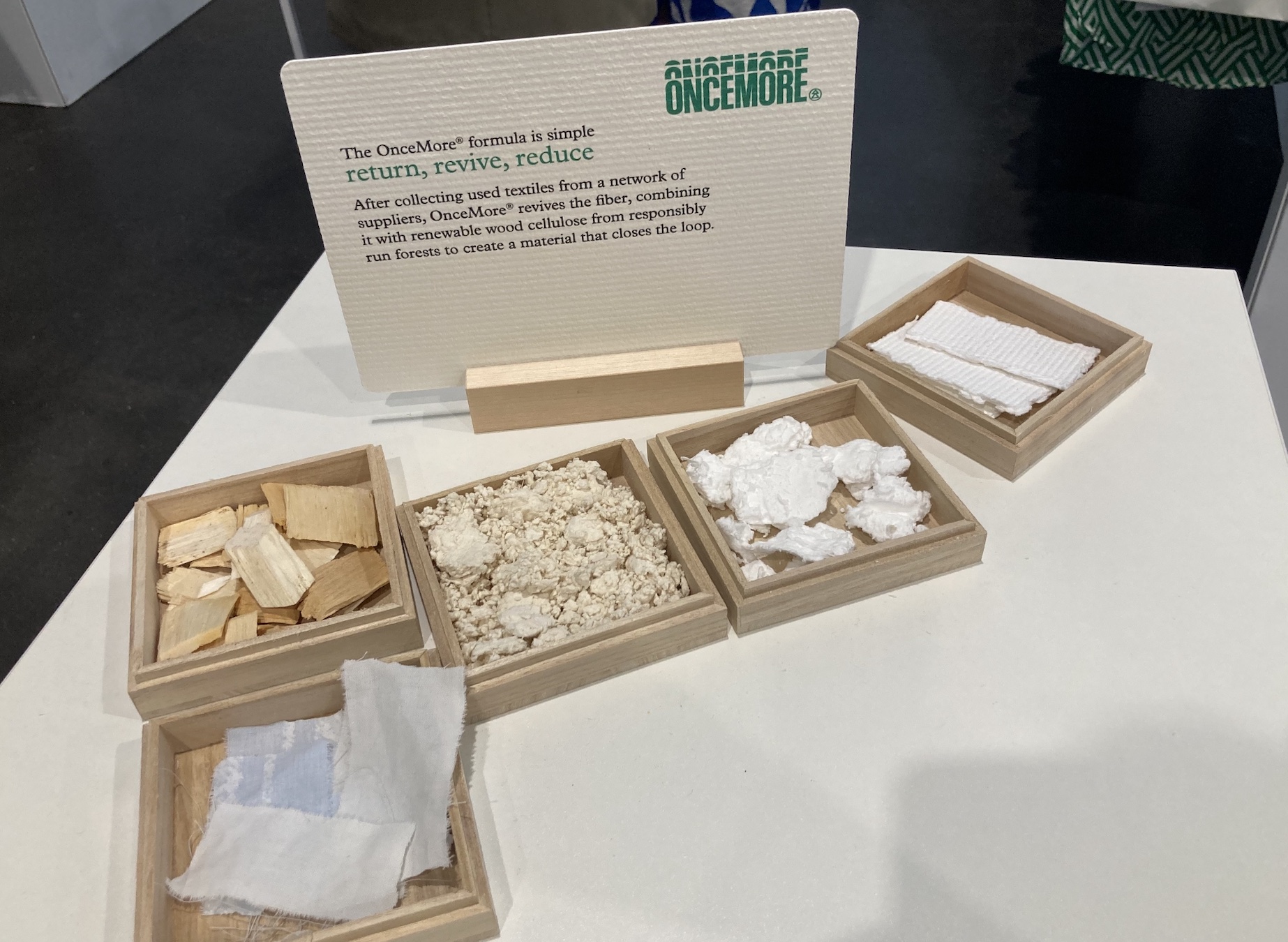
Swedish forest industry group Södra’s OnceMore process separates post-consumer cotton and polyester blended textile waste, before combining the cotton cellulose with renewable wood cellulose from responsibly managed forests to produce high quality viscose and lyocell.
Swiss, family owned Säntis Textiles specialises in fibre, yarn and fabric development and was the world’s first supplier to produce 26mm length fibres, which are needed to manufacture 100% recycled cotton textiles. This is made possible through the company’s RCO100 technology, which was developed to significantly reduce damage to the textile waste during the mechanical recycling process.
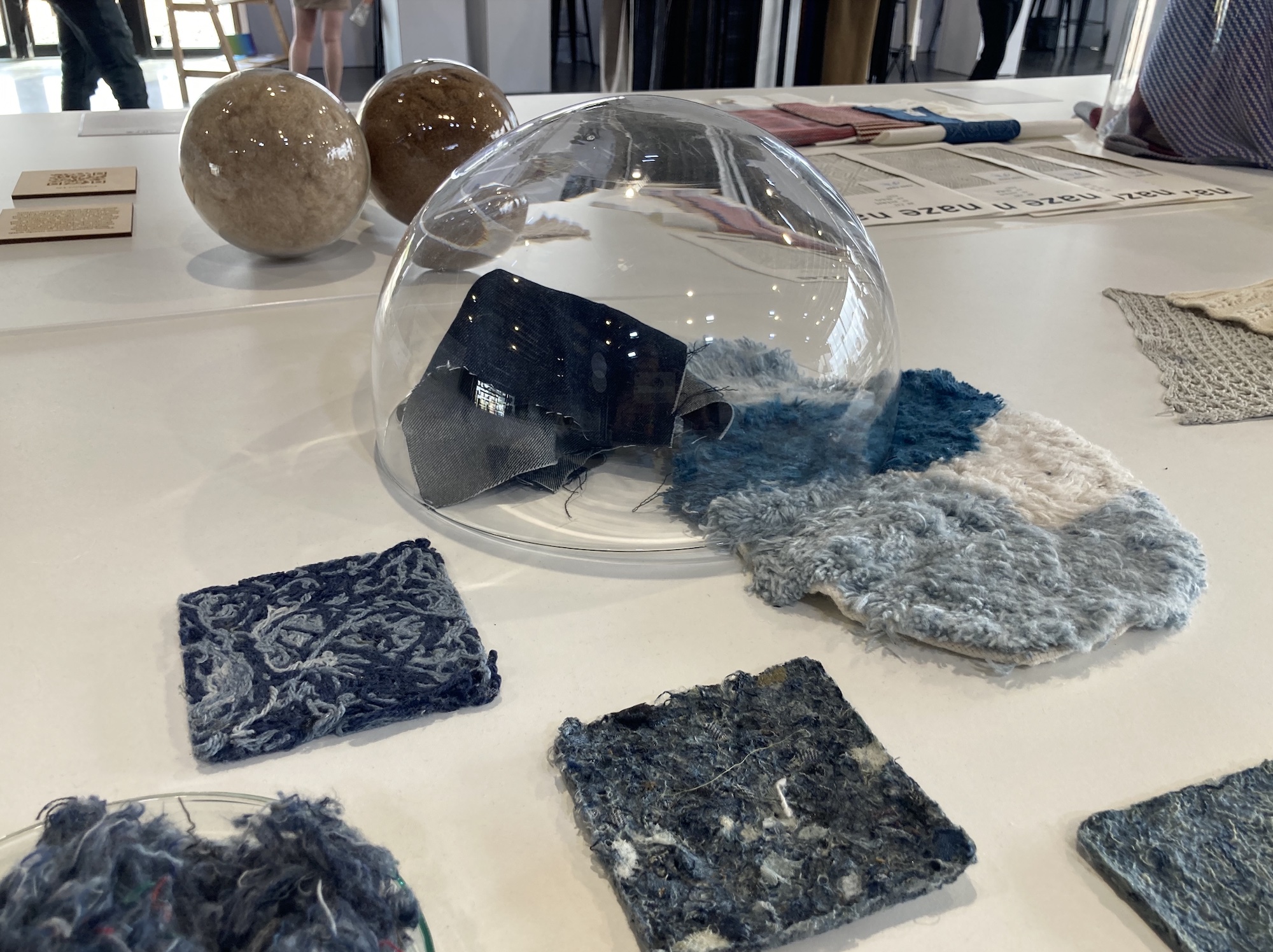
On a conceptual level, London based CQ Studio collaborated with Amsterdam based The Visionary Lab to investigate how post-consumer denim waste could be transformed into new materials for fashion and interiors. The samples were made with post-consumer denim and food waste, utilising a range of technologies to achieve a variety of material properties including faux fur.
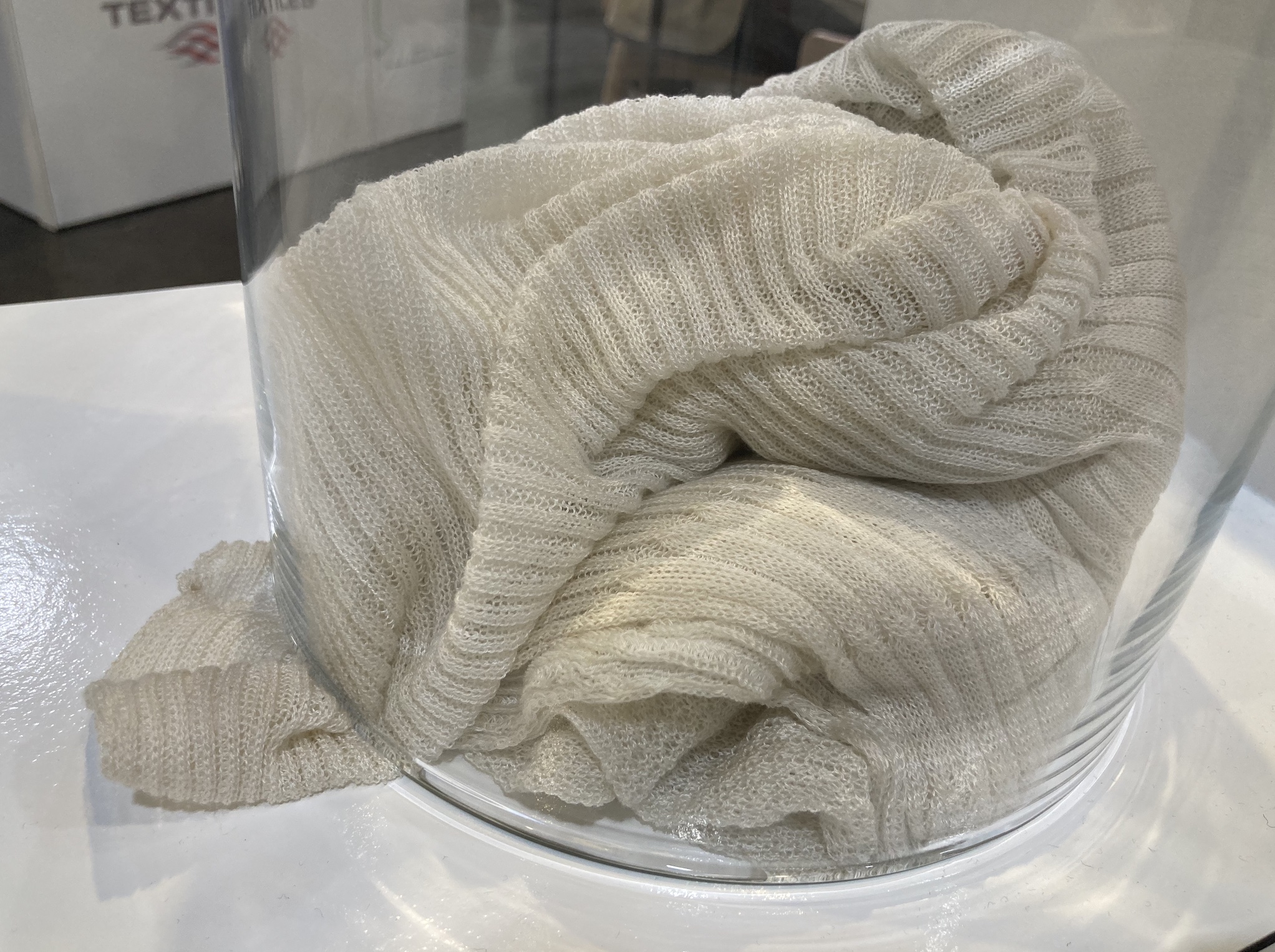
The curated solutions area showcased the use of food and agricultural waste, such as wheat straw, banana stalks and pineapple leaves, which is generally discarded or incinerated. Australian biotech company Nanollose presented a 3D knitted garment made from Nullabor lyocell fibre, which relies on microbes to convert waste products into bacterial cellulose.
Nordic clean energy producer Fortum showed a new biore¬finery concept where under¬uti¬lised biomasses, such as straw and bamboo waste, are given a second life as high-value raw materials for a wide range of indus¬tries. Swiss material innovators QWSTION and French textile company Green Whisper both presented materials and products made from waste banana stem, which lends itself to the production of lightweight, durable and technical fabrics that could replace cotton and synthetics in the future.
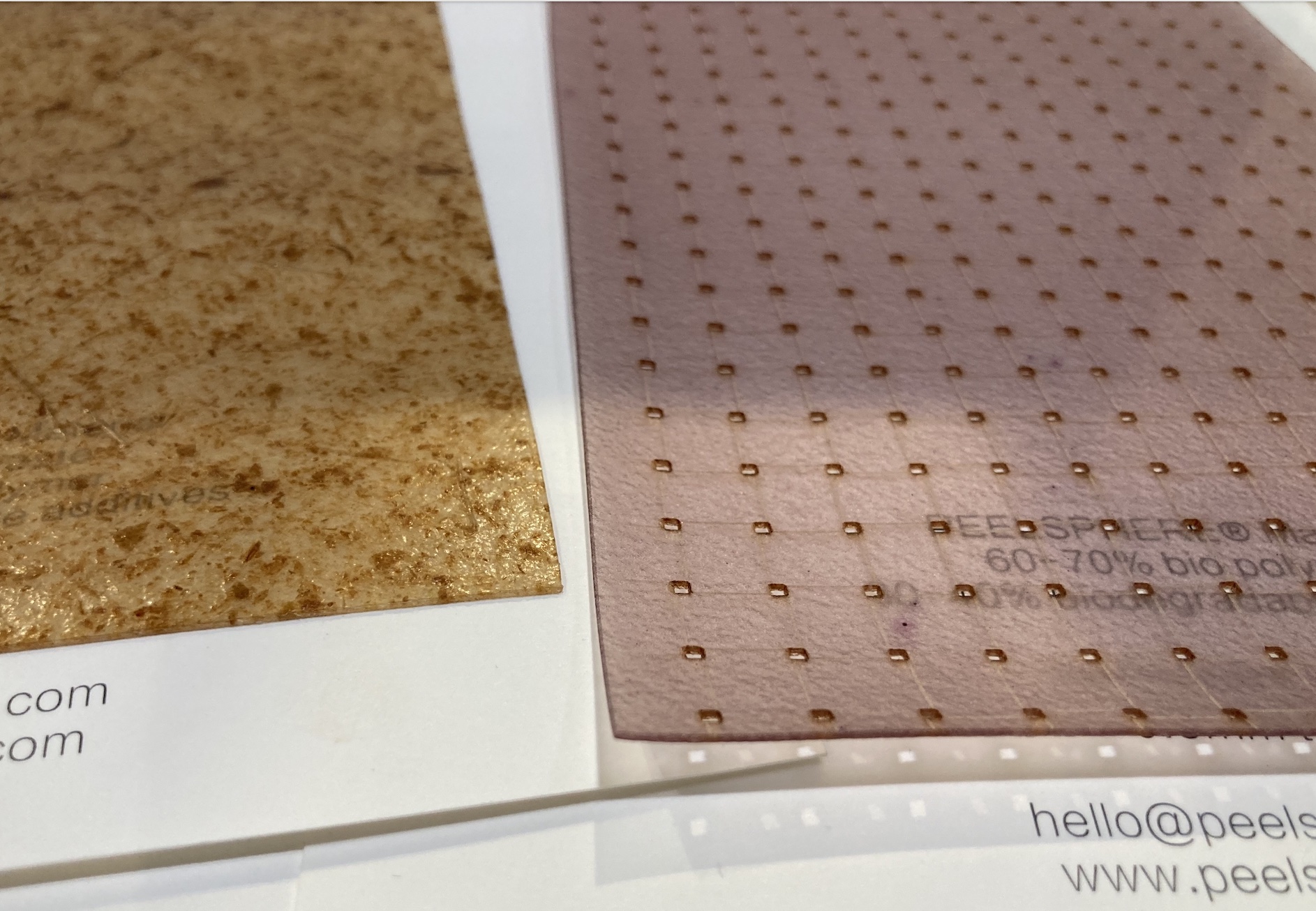
PEELSPHERE was developed as a plastic-free alternative to leather and synthetic leather and uses fruit waste from the juicing industry and algae derivatives to create a tactile, aesthetically striking and biodegradable material. Only naturally extracted plant dyes are used and the material is certified with OK-Biobased 4-star rating by TÜV Austria.
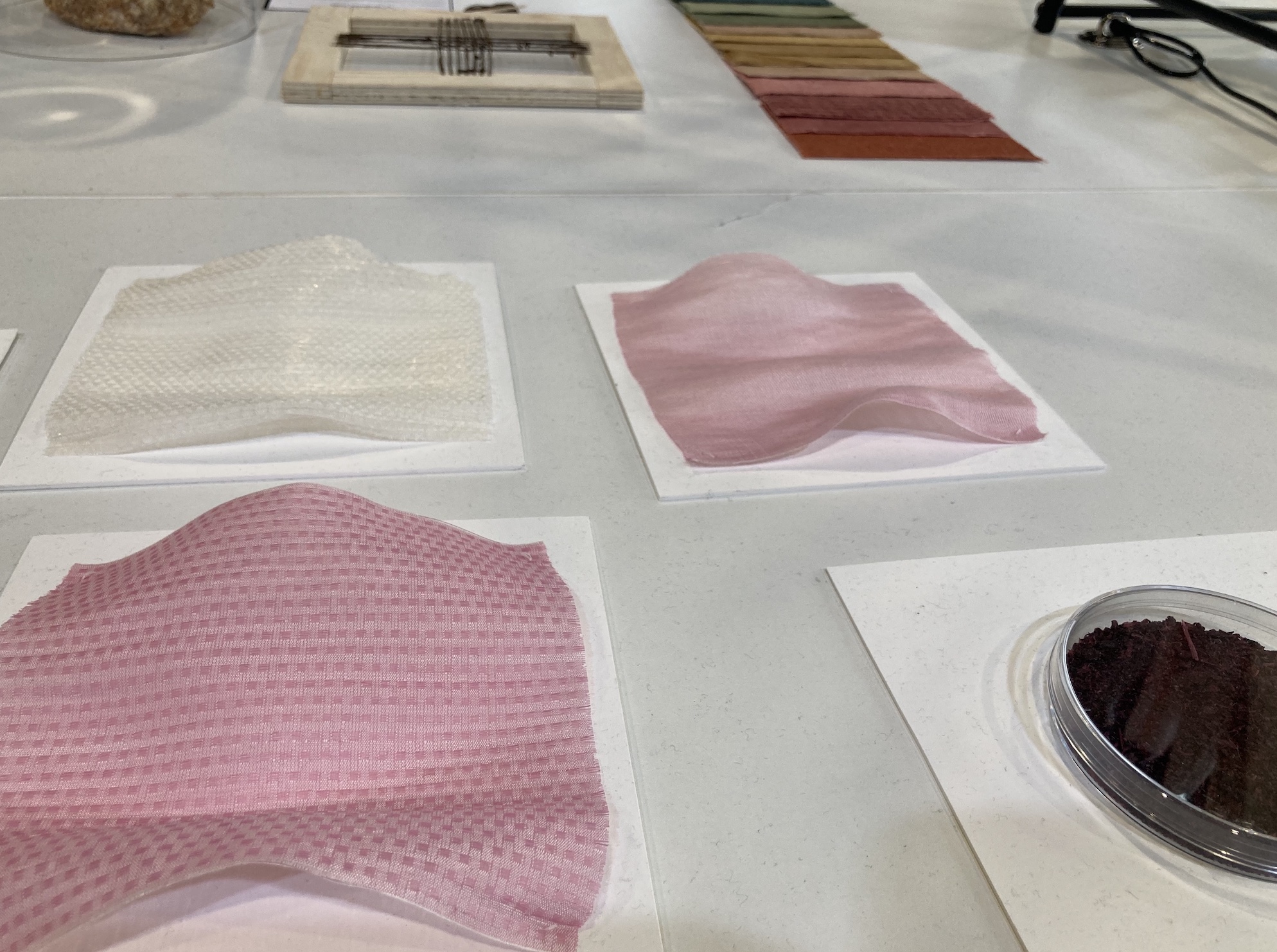
‘Rethinking Material Resources’ is a collaboration between the University of the Arts, London, and the University of Leeds, funded by The Business of Fashion Textiles and Technology. This research project investigates the utilisation of food waste, particularly regenerated protein fibres derived from milk, egg and soy to create textiles, as well as dyes made from waste blackcurrant skins.
Waste derived and natural dyes
According to Aida Rafat, co-founder of London based colour and fibre innovation company DyeRecycle, there has been very little innovation in textile dyeing over the last 100 years, but we are currently experiencing a huge influx of development and commercialisation in this field.
The concept of waste feedstock extends to the innovation of a new generation of dyes and ink and DyeRecycle’s technology can extract and recycle colours from textile waste. The technology’s benefits are two-fold; the captured dyes can be reused, therefore eliminating the need to produce new synthetic dyes, while it turns the waste textiles white, resulting in higher value and easier to recycle fibres.
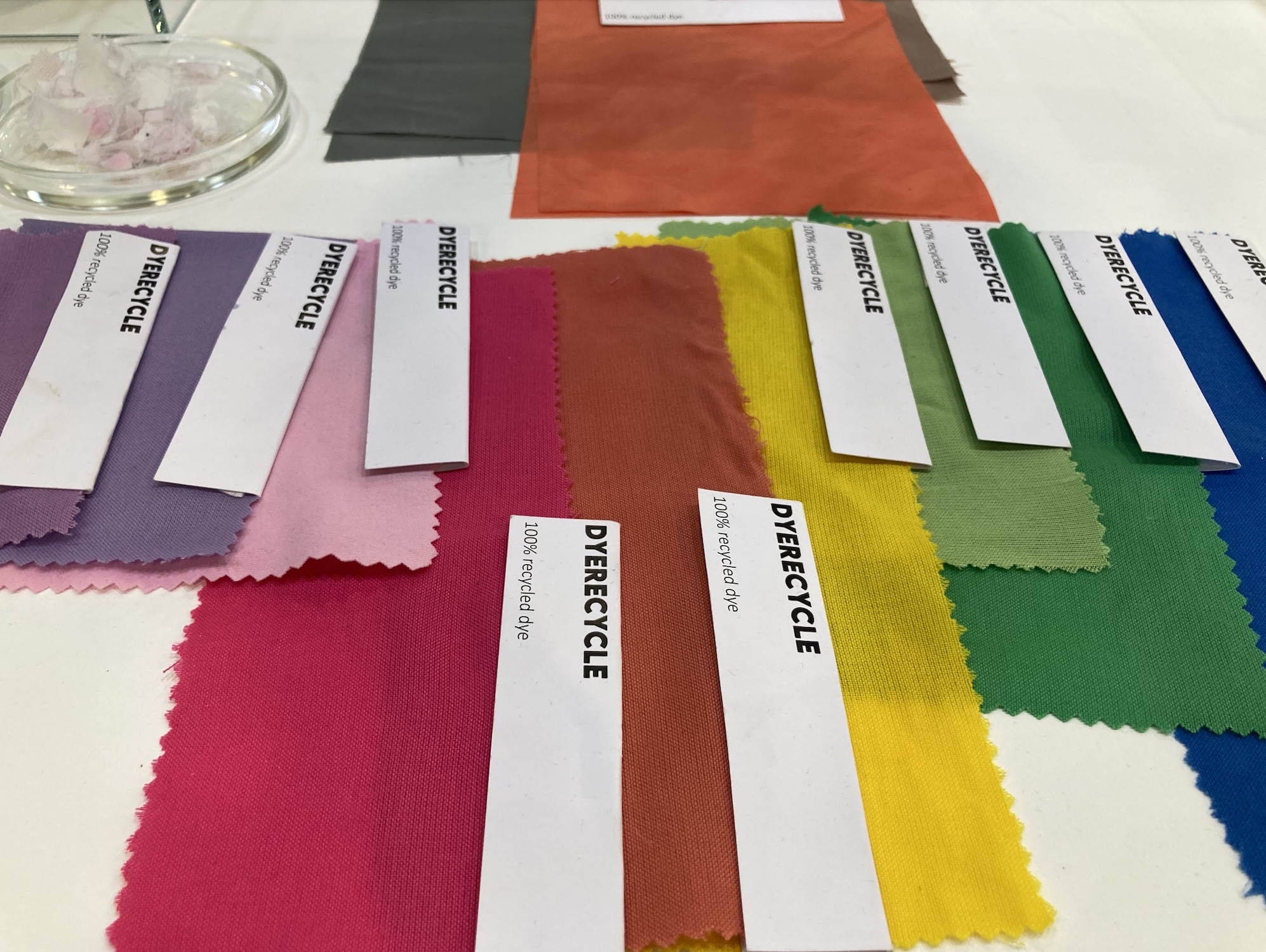
BioBlack TX by biochemicals company Nature Coatings is a 100% bio-based, certified and carbon negative black pigment, made from industrial wood waste from FSC-certified sources. It can be used for printing, yarn dyeing and coating of textiles.
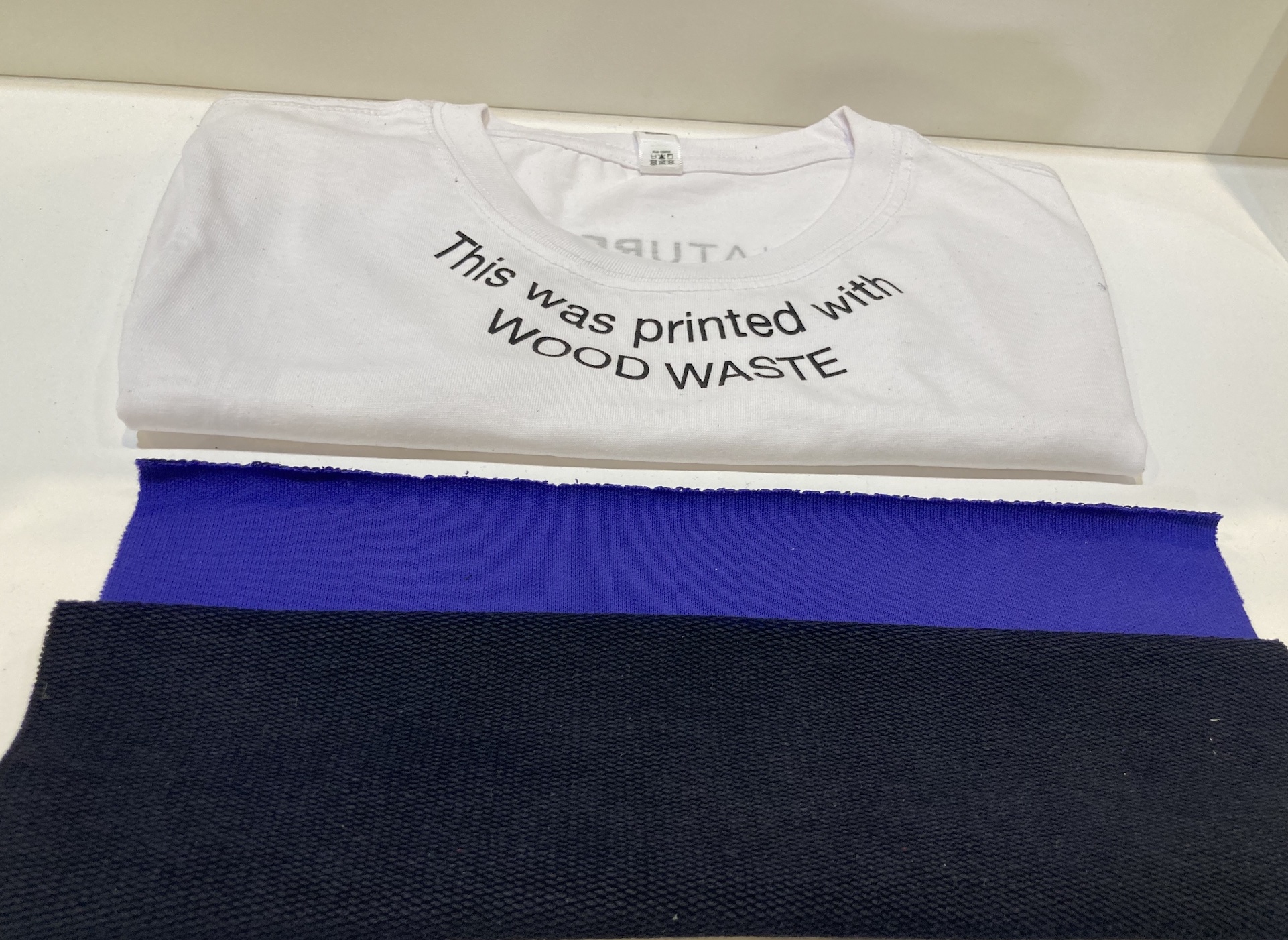 Material innovation start-up Sages London are developing a range of natural textile dyes derived from food waste, with the focus on providing solutions for pre-treatment processes, natural dye fixation, and the sustainable dyeing of bio-engineered materials.
Material innovation start-up Sages London are developing a range of natural textile dyes derived from food waste, with the focus on providing solutions for pre-treatment processes, natural dye fixation, and the sustainable dyeing of bio-engineered materials.
The School of Arts, Sciences and Humanities of the University of Sao Paulo presented a collection of fabric samples dyed with waste liquor, a by-product of sugar cane production. These dyes show best results on cotton and wool and provide strong colour fastness and UV protective properties.
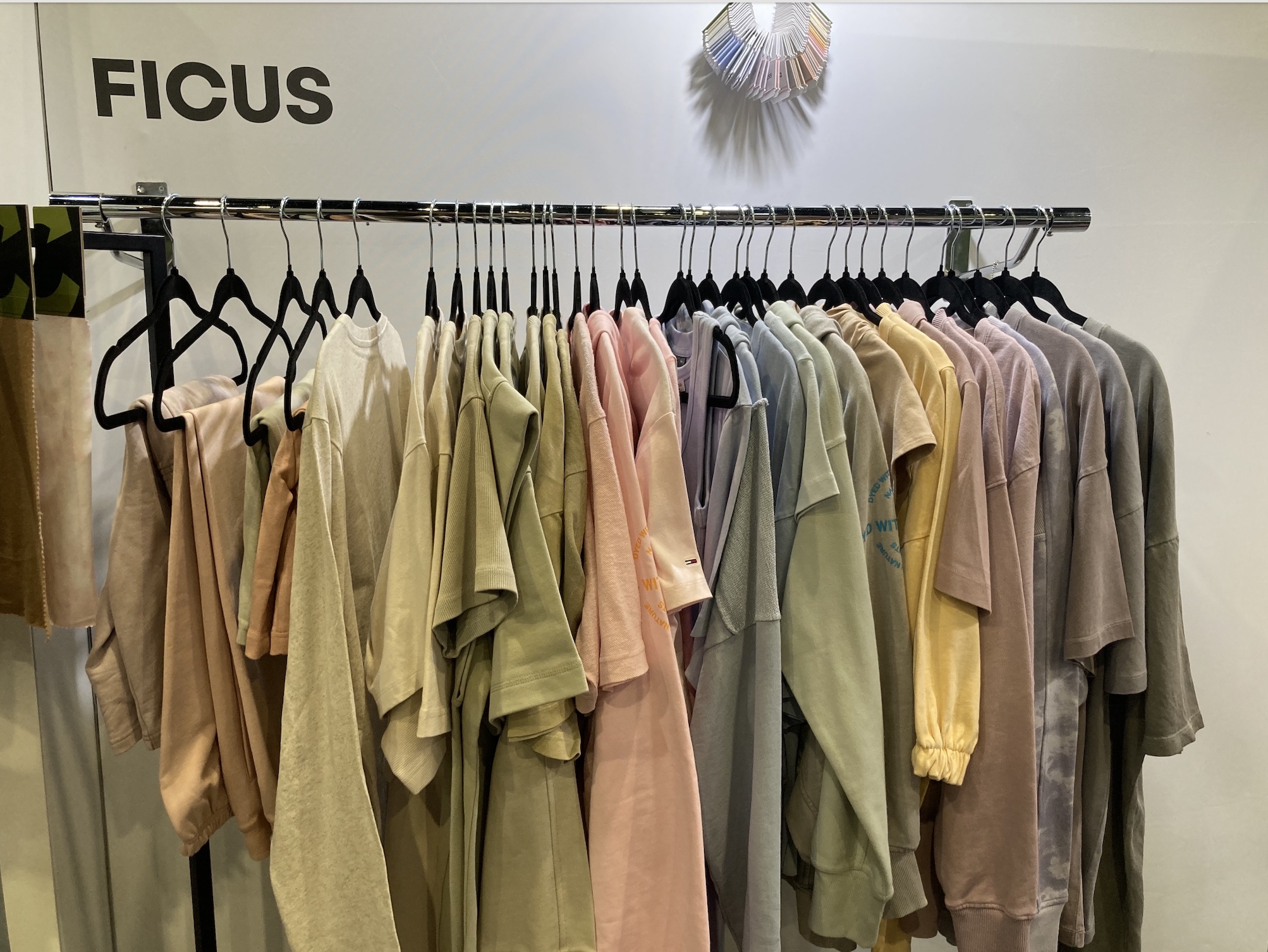
Turkish textile company Ficus Innovations originally took inspiration from the fig tree to develop natural textile dyes and inks, but the company also employ a range of other plant waste to create natural dyestuffs and printing techniques, which provide high colourfastness at industrial scale.
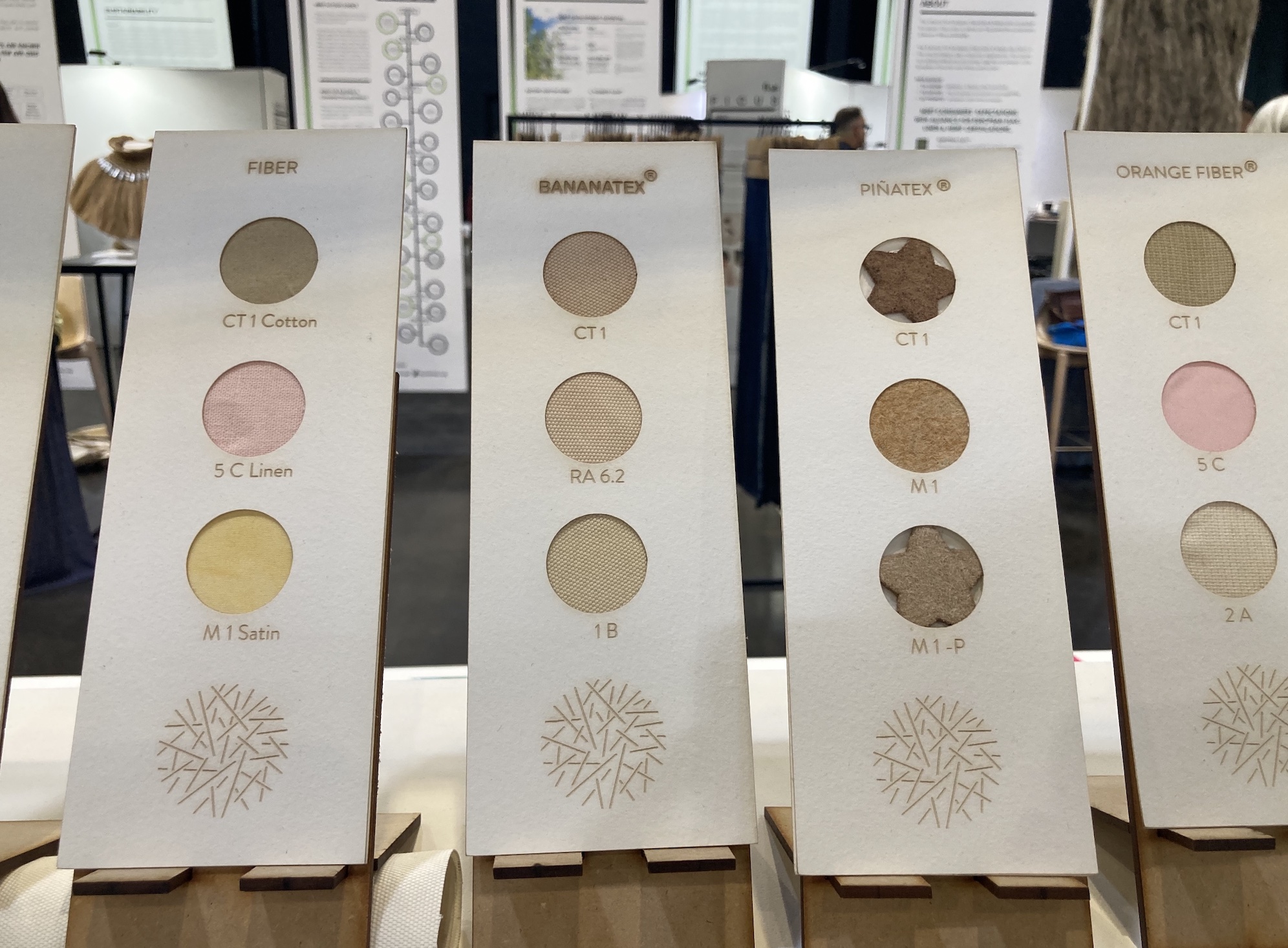
Chilean biotech start-up Patagon Fiber utilise wild Patagonian bacteria to produce natural pigments for their DyeGon technology, which currently comes in five shades and works well with cellulose fibres and wool.
Lab-grown future classics
Biofabricated textiles, which are produced from living microorganisms, such as bacteria, yeast, algae and mycelium, are seen as a new class of materials with the potential to replace the most popular fashion fabrics including cotton, polyester and leather.
During the ‘Building the biofabricated materials landscape’ panel, speakers agreed on the promising outlook for biomaterials, although there are various hurdles to overcome. While these materials can be produced in the exact amounts required, thus eliminating pre-consumer material waste entirely, innovation is often held back by the goal to recreate existing materials like for like, rather than embracing the creation of innovative, new material types. In addition, the panel was highly critical of the fact that current commercial materials, such as polyester, are cheaper than they should be considering their significant cost to the planet.
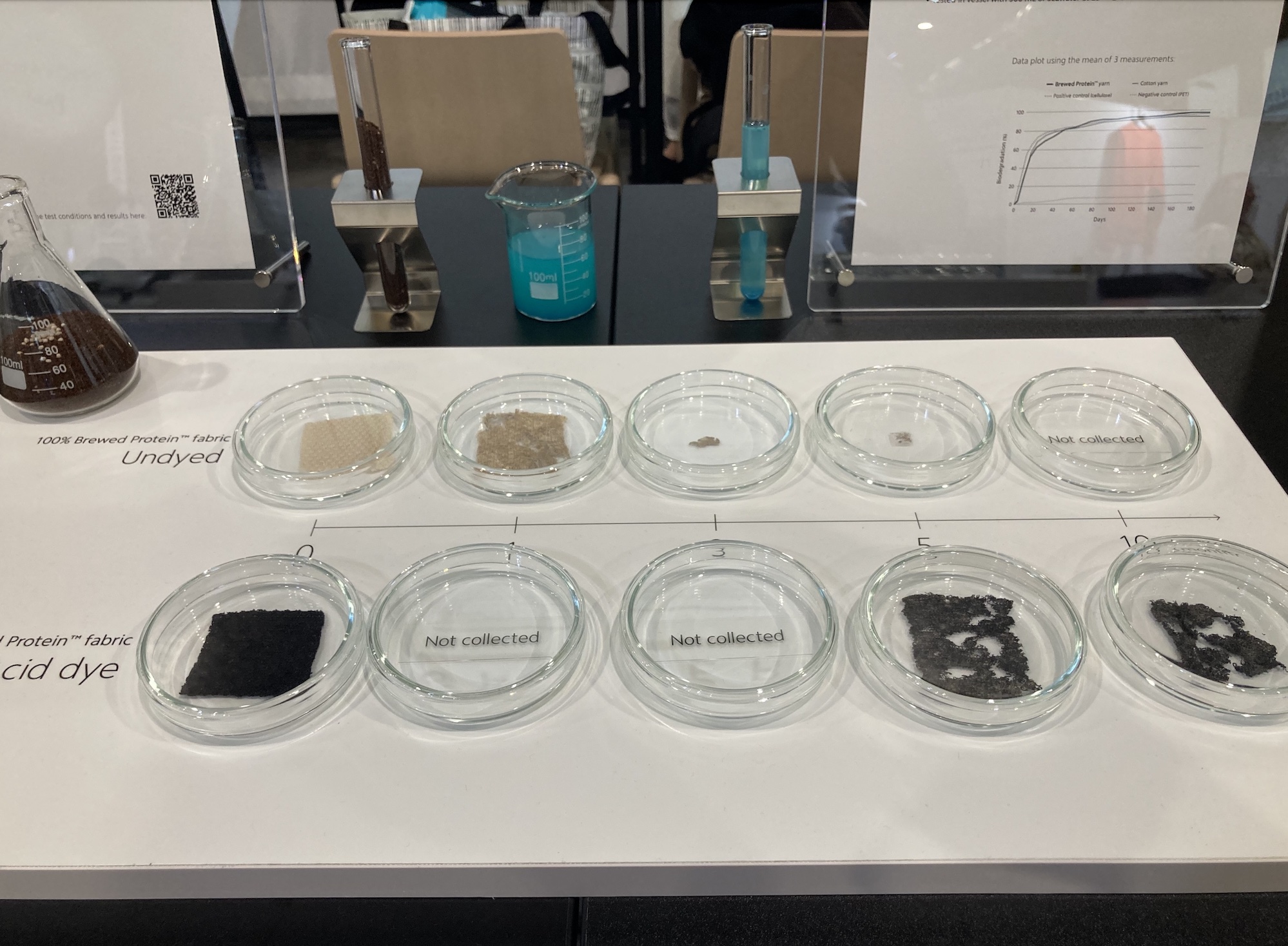
Kenji Higashi from Japanese biotech start-up Spiber Inc. pointed out that harmful materials should be taxed and de-incentivised, which would give new gen materials a better chance to compete at a commercial level. This approach could eventually enable new materials to be manufactured at similar volume as polyester and nylon, which would significantly reduce their price. Spiber’s Brewed Protein fibres are manufactured through fermentation and the company’s first commercial-scale fermentation plant in Thailand began operations in 2022, while a second plant in the USA is scheduled to open soon.
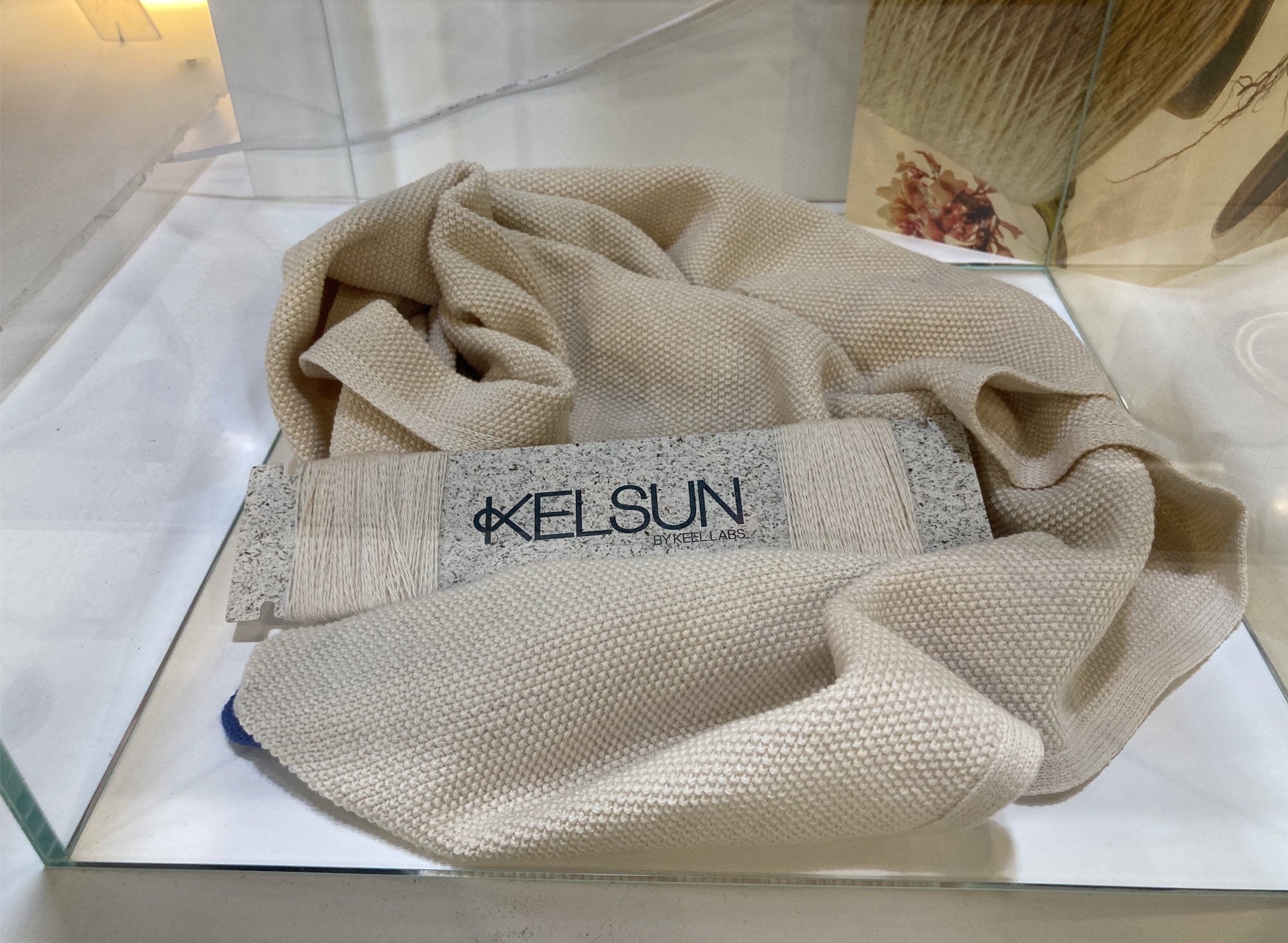
Visitors were excited to finally set eyes on Keel Labs’ seaweed-based yarn Kelsun, which has been in development since 2017. The yarn is made from 75% kelp biopolymers and 25% plant based additives and was developed as a biodegradable alternative to traditional polyester and cotton yarns.
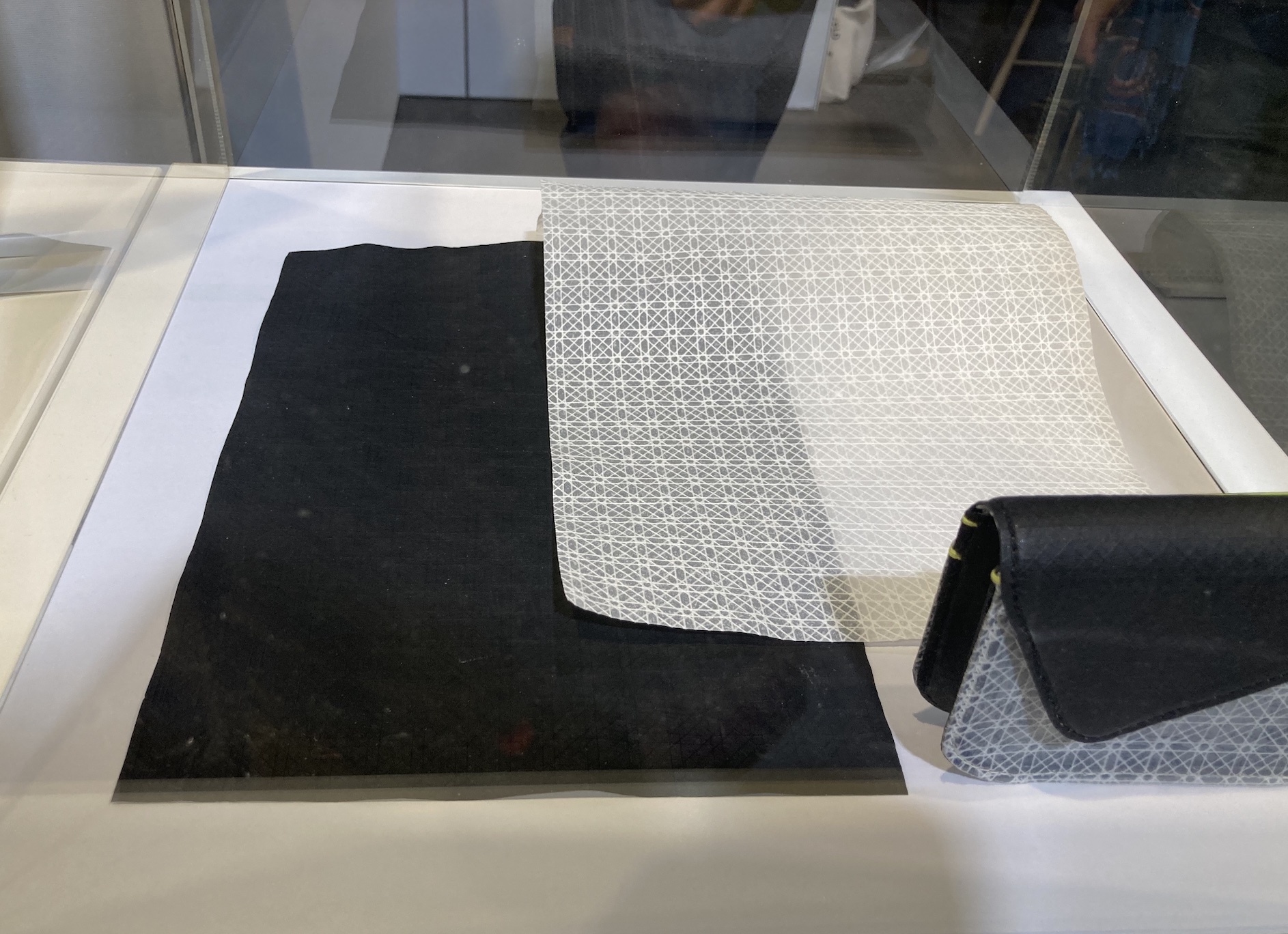
UK biotech company Modern Synthesis’ new class of nonwoven materials are another highly anticipated innovation. The patent-pending technology utilises microbes to produce a highly adaptable natural fibre called nanocellulose and the resulting material could replace both synthetic fabric and leather in the future.
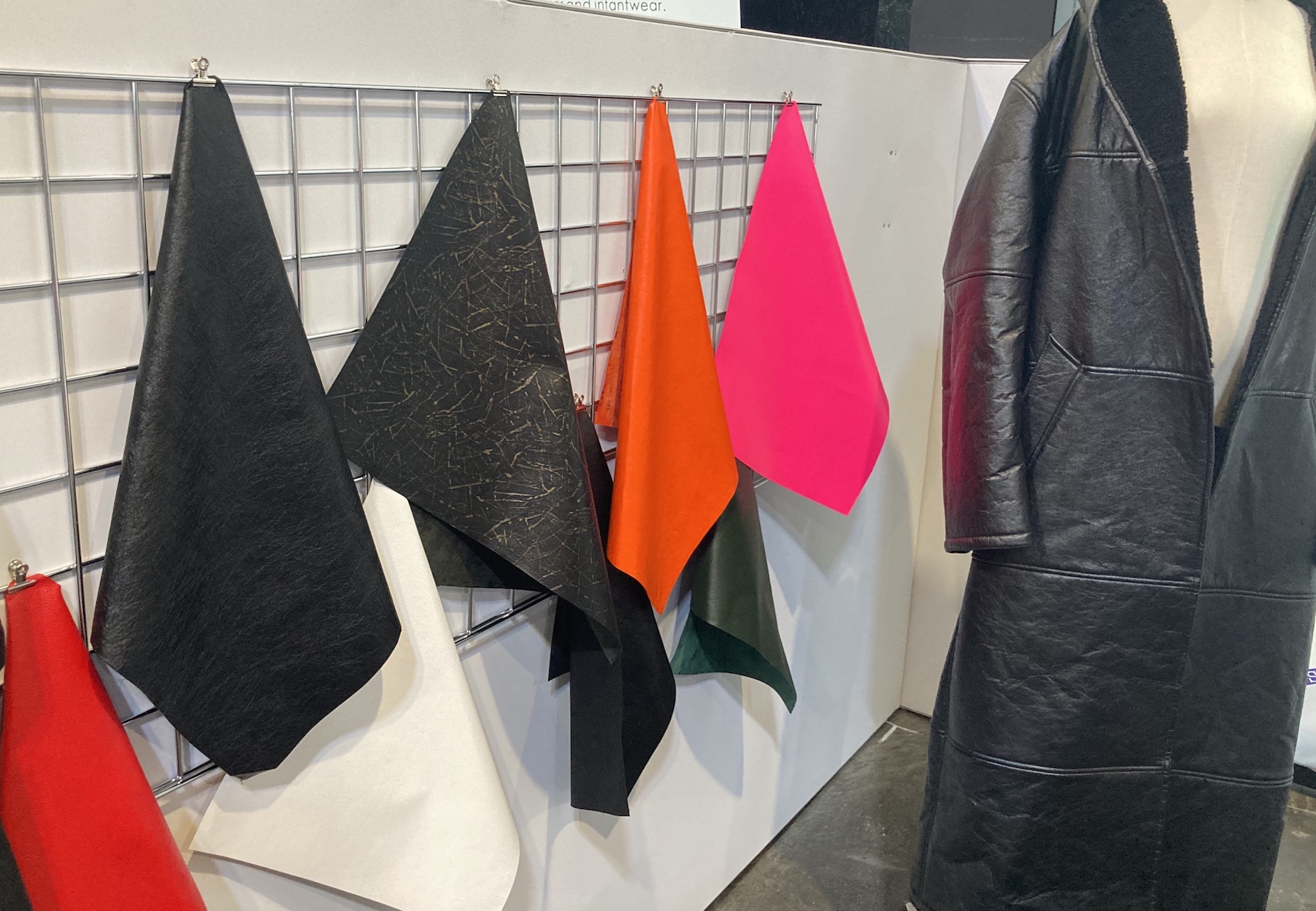
Italian material innovation company SQIM recently collaborated with Balenciaga to provide EPHEA mycelium-based material for a floor-length coat for the brands’ Winter 2022 catwalk show. Building on the success of their mycelium biofabrication process, co-founder Maurizio Montalti believes in the exciting potential that new types of feedstocks can bring. During a panel, he explained that anything with a nutritive content, even pre-loved clothing, can be fed to his ‘microbial co-workers’ to create new textiles for the luxury fashion market.
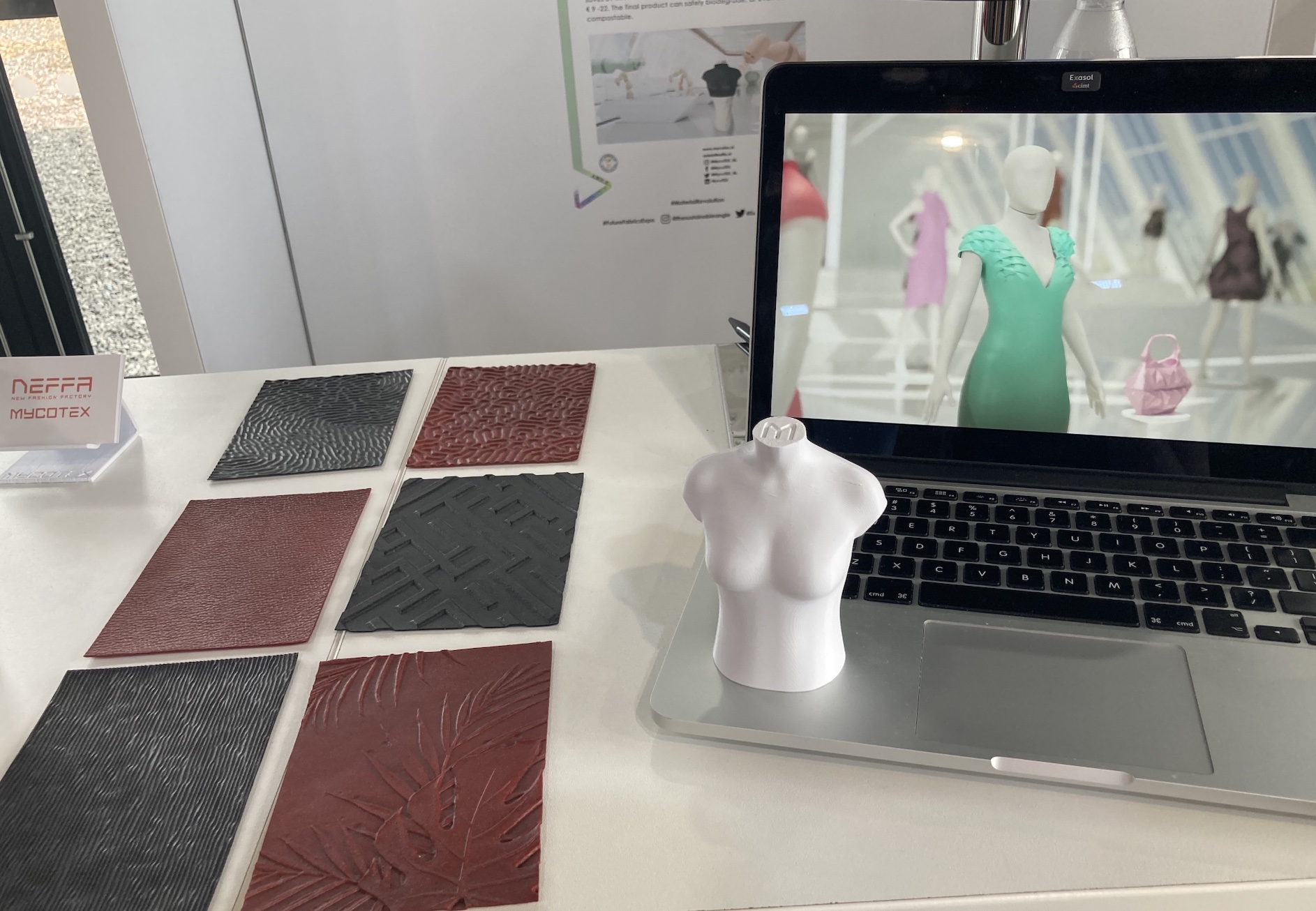
MYCOTEX by NEFFA, is a next-gen biomaterial that can be produced in the NEFFA New Fashion Factory. NEFFA is an automated manufacturing method able to create custom-made products from grown biomaterials, such as compostable mushroom roots, with a view to expand this to other biomaterials grown through liquid fermentation. The patented process involves robotic application of biomass around 3D moulds and provides customers with unlimited design freedom to produce textures and silhouettes that are impossible to achieve through traditional manufacturing methods.
Future Fabrics Expo 2023 showcased an inspiring selection of commercially available and emerging solutions, and exhibitors, panellists and visitors were clearly empowered to continue their journey towards the material revolution. However, as Nicoline van Enter co-founder at NEFFA identified, in these financially difficult times it is critical that fashion brands express their unwavering support for material and manufacturing start-ups to enable investment and show that innovation has a place.

Business intelligence for the fibre, textiles and apparel industries: technologies, innovations, markets, investments, trade policy, sourcing, strategy...
Find out more